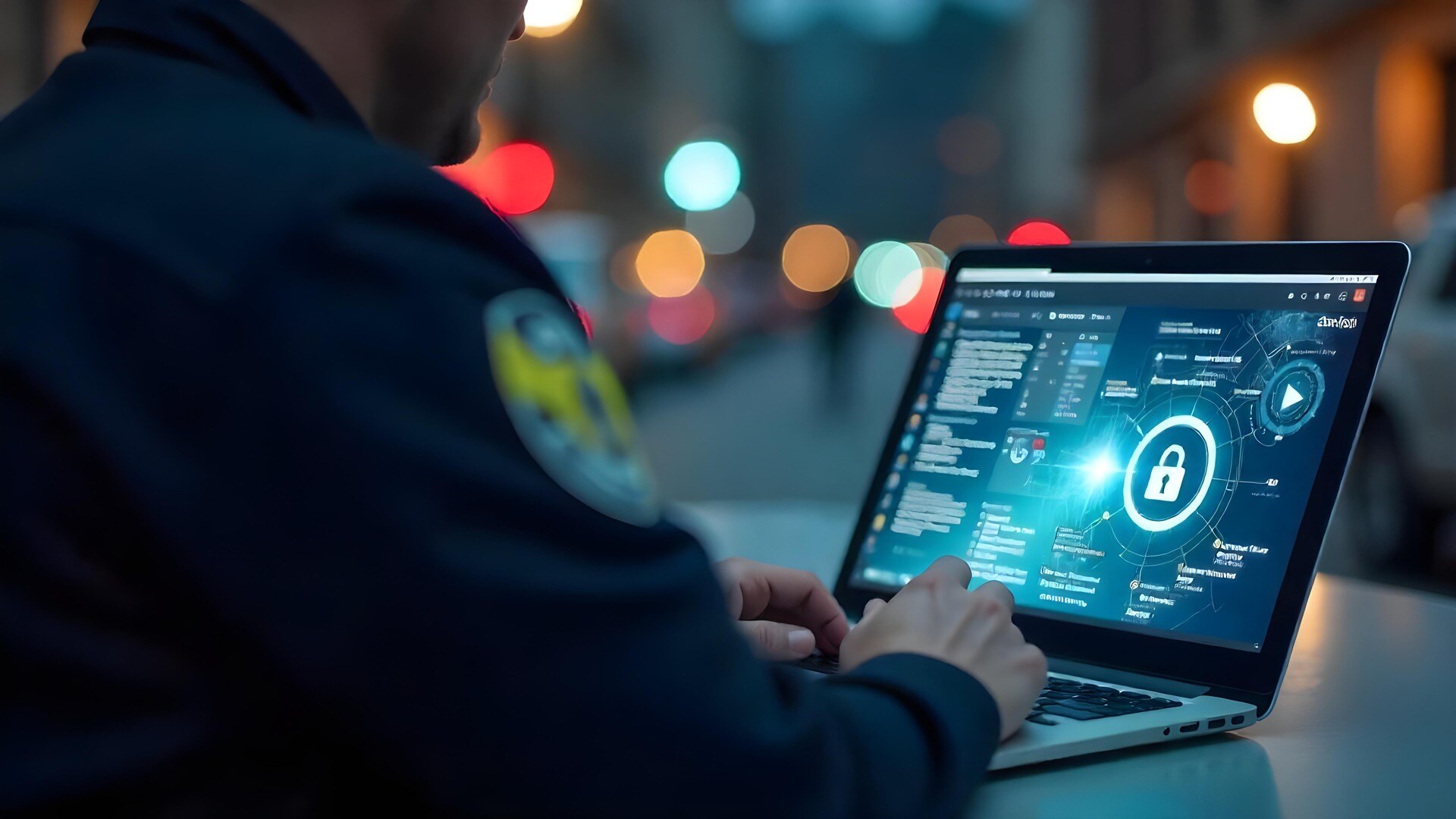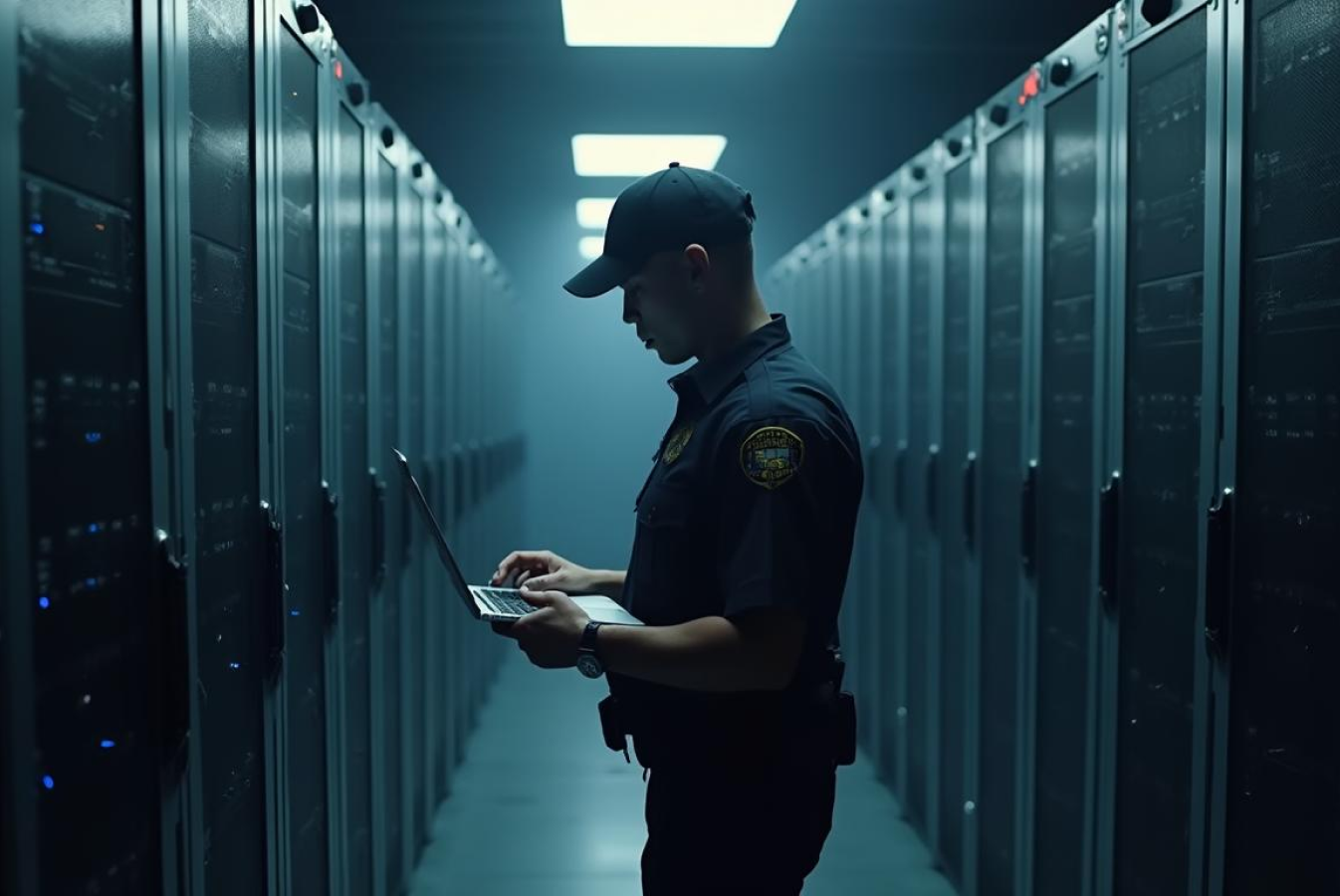Learn the best practices for digital evidence protection to ensure its integrity throughout the investigation process. From drive imaging to encryption and secure sharing, discover how to safeguard sensitive digital files and maintain compliance with legal standards.
8 Best Practices for Digital Evidence Protection and Preservation
by Jack Reed, Last updated: November 26, 2025, Code:

In this modern age of technology, digital evidence is an integral part of the entire investigation process and is growing at an exponential rate.
According to research, the digital forensics market is expected to reach USD 16.89 billion by 2032, a compound growth rate of 11.7% per year.
No doubt, digital evidence is a crucial player in solving criminal cases, but it is more fragile and can easily be tampered with or altered. Court requires sound digital evidence without any alteration. Therefore, digital evidence protection at every phase is of major concern from its collection to prosecution and court presentation.
When was the evidence collected, and why? Who recorded it? Who has accessed it since, and what actions are performed on it? How can you prove that the integrity of digital evidence is preserved?
What are the best ways to secure and protect digital evidence?
If you are wondering about best practices for preserving and protecting digital evidence, then you are at the right place.
In this guide, we'll explore how to preserve digital evidence effectively, focusing on protecting digital evidence from tampering while maintaining digital evidence integrity throughout investigations.
What is Digital Evidence Protection and Why It Matters
Digital evidence protection refers to the practices, tools, and strategies used to secure and preserve electronic data that is critical in investigations and legal proceedings. This encompasses ensuring that digital evidence remains intact, unaltered, and admissible in court.
Digital evidence can include anything from emails, files, videos, and photos, to logs from servers and network traffic, all of which can provide crucial information during criminal investigations or civil lawsuits.
Effective protection involves maintaining the integrity of this evidence from the moment it is collected, throughout the entire process of analysis, storage, sharing, and eventual presentation in court.
By safeguarding digital evidence, organizations ensure that it can be used to support investigations, convict criminals, or exonerate the innocent, while maintaining compliance with laws and regulations governing privacy and data protection.
The Critical Role of Protecting Digital Evidence in Investigations
The role of digital evidence protection is critical for several reasons:
-
Ensuring Integrity: The primary concern is to maintain the integrity of digital evidence. Any alteration, whether intentional or accidental, can result in evidence being ruled inadmissible in court.
-
Admissibility in Court: Properly protected and preserved evidence is more likely to be accepted by courts. If the evidence is not properly handled, it may be contested during trials, leading to the loss of potential cases.
-
Preventing Tampering: Digital evidence is highly susceptible to tampering or manipulation, especially if it is stored improperly or transmitted insecurely. Without adequate protection measures, digital evidence can be altered, compromising the case.
-
Compliance with Regulations: Various regulations, including GDPR, HIPAA, and CJIS, mandate that certain types of digital evidence be protected and secured. Organizations need to adhere to these regulations to avoid legal consequences.
-
Protecting Privacy and Confidentiality: Digital evidence may contain sensitive personal or corporate data. Its protection ensures that confidential information is not inadvertently leaked or misused, protecting individuals' and organizations' privacy.
Real-World Examples of Incidents Where Digital Evidence Was Not Protected
In recent years, several significant incidents have highlighted the critical importance of properly handling and protecting digital evidence. Here are some notable examples:
-
Mishandling of Evidence in Orange County, California (2021):
-
Incident: The Orange County Sheriff's Department mishandled evidence in numerous criminal cases, leading to the dismissal of charges in 67 cases.
-
Details: Errors in evidence handling compromised the integrity of cases, resulting in significant setbacks for the justice system.
-
-
Colorado Crime Lab Analyst Misconduct (2025):
-
Incident: Yvonne "Missy" Woods, a forensic analyst at the Colorado Bureau of Investigation, was charged with over 100 criminal counts for allegedly altering and mishandling sexual assault case reports over 15 years.
-
Details: Woods is accused of deleting data and issuing false reports, affecting over 1,000 cases and costing the bureau more than $11 million.
-
-
Missing Video Evidence from January 6 Capitol Attack (2025):
-
Incident: Video evidence used in the sentencing of a rioter from the January 6, 2021, Capitol attack disappeared from a government website.
-
Details: Nine videos related to the case went missing, raising concerns about the potential loss of critical evidence from a significant event.
-
These examples highlight the severe consequences of failing to protect digital evidence adequately, ranging from financial losses and legal repercussions to reputational damage and loss of public trust.
It underscores the importance of implementing robust digital evidence preservation practices to safeguard both the data and the legal processes it supports.
8 Best Practices for Protecting Digital Evidence and Ensuring Digital Evidence Integrity
To make digital evidence legally admissible, you need to bring best practices into play. Digital evidence preservation should be the top priority, ensuring that every phase of the evidence handling process—from collection to sharing—maintains the evidence’s integrity.
The following specific ways assist you in preserving and protecting digital evidence in every possible way.
1. Maintain Original File Using Drive Imaging
Before initiating the process of digital evidence analysis, officers or investigators should image it first. It means to create a bit-for-bit duplicate of an evidence file. In this way, you can retain the original digital evidence file.
Do not perform analysis on the original evidence file (perform any such analysis on its duplicate file). Make sure to limit every action performed on the original digital evidence file. Otherwise, the court will not accept it for legal proceedings.
2. Log Every Activity in the Chain of Custody
In the judiciary, it is essential to prove the integrity of evidence. You should appropriately handle it by maintaining audit logs detailing: who has accessed it? Who modified it and how? Otherwise, it will not be admissible in court and will not stand against any legal interrogation.
Therefore, protecting digital evidence is a great challenge. You cannot rely on your operating system to provide you with such a detailed report.
Chain of custody will help you in proving the authenticity of evidence as it provides a complete record of who accessed the file, at what time, and the sequence of activities performed on the evidence by any authenticated user.
3. Verify the Evidence for Tamper to Protect Digital Evidence
The process of imaging generates cryptographic hash values. These cryptographic hash values verify the integrity and authenticity of digital evidence by providing proof that any digital evidence is the same as the original since uploaded.
If any alteration is made to the evidence, the system generates a new hash value that does not match the original one. Hence, through hash values, you can detect any sort of alteration, and the integrity of digital evidence is preserved.
4. Protect the Evidence Repository
In today’s digital world, vast amounts of evidence can be stored in compact storage solutions, from local servers to cloud-based repositories. If your digital evidence is stored in an evidence management system, cloud storage, or any external repository, securing the storage environment is crucial.
Ensure that your evidence storage system is well-protected by implementing strong access controls. Use multi-factor authentication (MFA) to restrict access to authorized personnel only. Set granular access controls so that only designated users can access specific evidence files. Additionally, each evidence should be password protected in order to add an extra layer of security.
Unauthorized access can compromise the integrity of digital evidence. To prevent breaches, always configure strict security policies within your evidence management system and ensure regular security assessments to identify vulnerabilities.
5. Protect Digital Evidence Using Encryption
To ensure maximum security, all stored digital evidence should be encrypted, whether at rest or in transit. This means applying end-to-end encryption to prevent unauthorized access, even if the storage system itself is compromised.
However, encryption strategies should align with operational needs. In large-scale Digital Evidence Management Systems (DEMS), built-in encryption mechanisms ensure compliance with CJIS, GDPR, and other legal frameworks. If using third-party storage solutions, ensure they support strong encryption standards like AES-256.
By encrypting all stored evidence, you maintain chain of custody, prevent unauthorized access, and protect sensitive information from breaches or tampering.
6. Share Temporary Shareable Links of Evidence
When sharing digital evidence, it should be done in a controlled manner to prevent unauthorized distribution. Instead of granting unrestricted access, use tokenized URLs that allow secure sharing with limitations on:
- View limits: Restrict the number of times an evidence file can be accessed.
- Expiration time: Automatically revoke access after a set period to prevent misuse.
- One-time access links: Ensure evidence can only be viewed once by the recipient.
By using secure sharing mechanisms, organizations can maintain control over digital evidence distribution while preventing leaks or unauthorized downloads.
7. Ask the Reason for Accessing the Evidence
To enhance accountability, require users to provide a reason for accessing specific evidence files. This practice ensures that every access request is logged with a justification, which helps:
- Maintain transparency in forensic investigations
- Prevent unauthorized access attempts
- Ensure compliance with legal and regulatory policies
This feature is particularly useful in law enforcement and legal proceedings, where chain of custody and access justification are critical for maintaining the integrity of digital evidence.
8. Apply Advanced Restrictions for Digital Evidence Protection
For maximum security, apply advanced access restrictions to limit evidence access based on specific parameters:
- Portal Restriction: Restricts access to evidence portals, allowing only managers and administrators to control sensitive data.
- Geo-Restriction: Uses IP filtering and location-based access controls to prevent unauthorized access from specific regions or untrusted networks.
- Domain Restriction: Limits evidence access to pre-approved domains, ensuring that only users within a secure network can view or download files.
Implementing these restrictions minimizes the risk of data leaks, prevents unauthorized access from external sources, and ensures compliance with legal standards in handling digital evidence.
These measures also support digital evidence preservation, ensuring the evidence is kept secure throughout the entire investigative process.
Cloud Storage vs Local Storage for Protecting Digital Evidence
For long-term storage of digital evidence, which one is better, cloud storage or local storage platforms? You need to have trained IT employees to store each evidence file locally and create backups.
Moreover, local physical servers are more prone to external damage and hard to afford. Along with that, local servers have limited storage space. It is expensive to create and maintain the local storage system.
Cloud storage is the most secure and scalable, with additional layers of security that safeguard your digital evidence files.
According to Forbes, 94% of organizations claimed an improvement in security after switching to the cloud.”
Therefore, for protecting digital evidence you should opt for a cloud-based storage platform, as it ensures better digital evidence preservation with added scalability, security, and ease of management.
Read more about the differences between cloud vs on-premise storage.
VIDIZMO DEMS: Complete Solution for Digital Evidence Protection
VIDIZMO provides an IDC-recognized Digital Evidence Management System (DEMS), which is secure and easy-to-use software. It enables law enforcement agencies and other organizations to collect, store, handle, share and protect digital evidence in its entire journey.
VIDIZMO DEMS is trusted for its secure storage, flexible deployment options, AI-powered features, and whatnot. The following are some of its remarkable features:
- Collecting digital evidence from various sources such as dashcams, body-worn cameras, CCTV, drones, etc.
- Securing and protecting digital evidence with FIPS-compliant end-to-end encryption.
- A wide range of deployment options includes Azure Cloud, AWS Cloud, Any Other Commercial or Government Cloud, on-premises data centers, and hybrid infrastructure.
- Detecting any type of tampering with the digital evidence since upload through the help of SHA cryptographic hash values.
- Sharing digital evidence securely on the same network with other officers and defense attorneys with a number of views, block download options, expiration dates, etc.
- Integrating with your existing IT applications such as computer-aided dispatch (CAD), record management system (RMS), and case management system (CMS).
- Integrating with various SSO identity providers, including Azure AD, OneLogin, Okta, etc.
- Maintaining a complete chain of custody reports in detail for tracking digital evidence across the portal.
- Meeting compliance requirements such as CJIS, FedRAMP, GDPR, etc.
- Detecting, tracking, and redacting personally identifiable information appearing in videos.
- Restricting specific regional IP for sharing digital evidence files.
- Assigning specific roles to each user role-based access control with certain permissions to access the portal.
- Flagging of evidence to provide notifications and updates regarding any type of activity performed on the evidence to authorized people.
- Sharing digital evidence with external users via a link with expiration dates. Creating multiple links for each evidence file.
Talk to our experts today and discover how VIDIZMO can help you protect digital evidence, ensure compliance, and maintain integrity in every investigation.
Digital Evidence Protection in the Modern Age
Digital evidence plays a pivotal role in modern investigations, but its fragility and susceptibility to tampering make its preservation and protection paramount. Digital evidence preservation is crucial to ensure that evidence remains intact and untampered with throughout the investigative process.
Implementing best practices such as drive imaging, maintaining a robust chain of custody, leveraging tamper detection mechanisms, securing evidence storage, advanced restrictions, and limited sharing ensures digital evidence protection and admissibility in court.
The choice between local and cloud storage highlights the need for scalability, security, and cost-efficiency. For effective digital evidence preservation, organizations must consider flexible, secure storage options. VIDIZMO Digital Evidence Management System (DEMS) offers the best of both worlds with flexible cloud, on-premises, and hybrid deployment options to manage and store digital evidence securely.
Its robust features, including industry-standard encryption, tamper detection, chain-of-custody maintenance, and AI-powered tools, empower organizations to meet the increasing demands of digital investigations while ensuring strict compliance and comprehensive digital evidence protection.
By embracing these strategies and tools, law enforcement agencies and other organizations can confidently navigate the challenges of digital evidence preservation and uphold the integrity of their investigations.
People Also Ask
What are the best practices for preserving digital evidence?
To preserve digital evidence effectively and ensure its integrity, it is essential to create a bit-for-bit duplicate of the original evidence file. This process of imaging guarantees that the original file remains untouched, a key step in digital evidence preservation. It is also critical to maintain a detailed chain of custody log, which tracks each step of evidence handling. This log is crucial for proving the authenticity of the evidence and plays a pivotal role in digital evidence preservation during the investigation process.
How can the integrity of digital evidence be maintained?
The integrity of digital evidence can be maintained by creating cryptographic hash values, which help detect any alterations. If the evidence is tampered with, the hash value will change, indicating that the integrity has been compromised.
Why is chain of custody important in digital evidence protection?
The chain of custody ensures that every action taken on the evidence is properly logged and can be traced back to an authenticated individual. It helps demonstrate that the digital evidence has not been altered and can be legally presented in court.
How is digital evidence protected and securely stored?
Digital evidence should be securely stored using strong encryption methods and multi-factor authentication (MFA). Whether in cloud storage or physical servers, digital evidence storage systems should be configured to prevent unauthorized access and regularly reviewed for vulnerabilities.
What are the best practices for sharing digital evidence?
When sharing digital evidence, it is important to use secure methods like tokenized URLs with access limits, expiration dates, and one-time access options. This ensures that only authorized individuals can view the evidence, preventing unauthorized distribution or tampering.
What is digital evidence protection?
Digital evidence protection involves securing, verifying, and maintaining the integrity of digital files throughout the investigation process. This includes using encryption, creating hash values for verification, and implementing strict access control policies to ensure the evidence remains untampered with.
What is the role of encryption in digital evidence protection?
Encryption plays a crucial role in digital evidence protection by ensuring that evidence files remain secure, both when stored and when transmitted. End-to-end encryption prevents unauthorized access, even if the storage system is compromised.
How can digital evidence be verified for tampering?
Digital evidence can be verified for tampering by using cryptographic hash values, which provide a unique identifier for each piece of evidence. If any alterations are made to the evidence, the hash value will change, signaling tampering.
What is a Digital Evidence Management System (DEMS)?
A Digital Evidence Management System (DEMS) is a secure platform designed to collect, store, manage, and share digital evidence. DEMS platforms provide advanced features like encryption, access control, and tamper detection, ensuring the integrity and security of digital evidence throughout its lifecycle.
How do digital forensics best practices help in protecting evidence?
Digital forensics best practices, such as creating a bit-for-bit image of the original evidence, maintaining a complete chain of custody, and applying tamper detection mechanisms, help preserve and protect the integrity of digital evidence. These practices ensure that the evidence can be confidently presented in court.
Jump to
You May Also Like
These Related Stories

On-Premises vs. Cloud: Which one is Better for your Law Enforcement Agency?

Digital Evidence Management System for Prosecutors: The Ultimate Guide


No Comments Yet
Let us know what you think